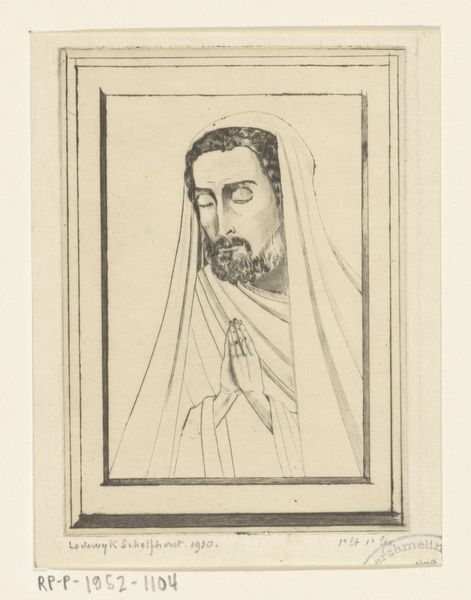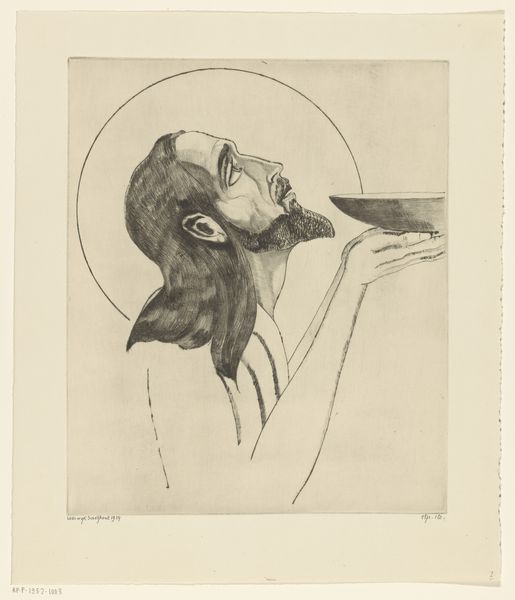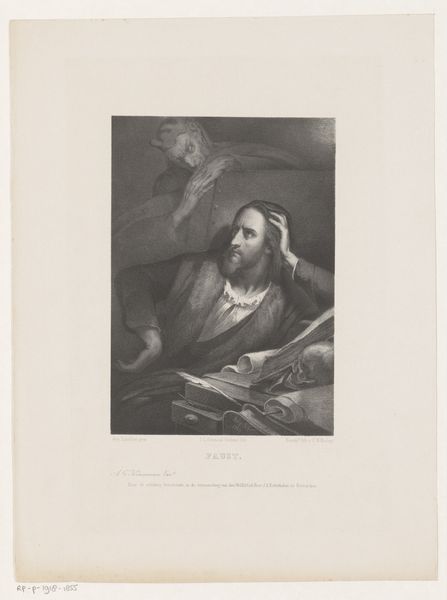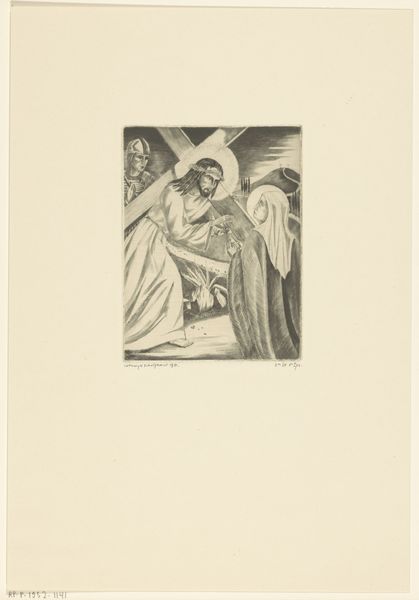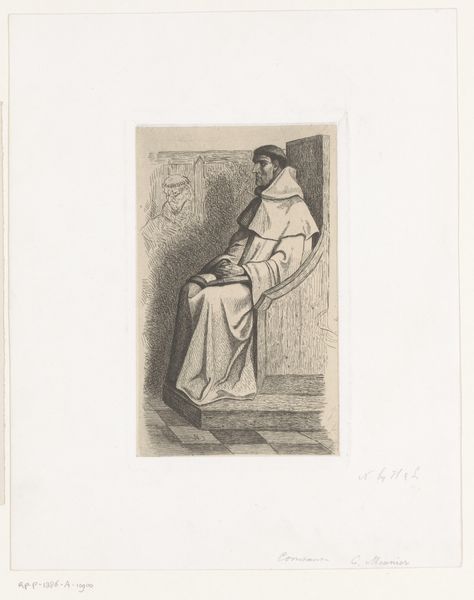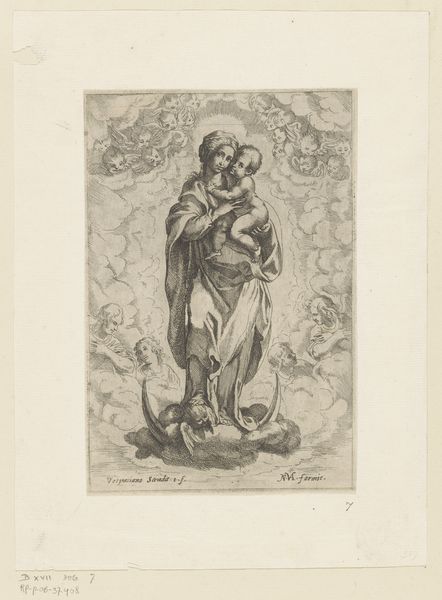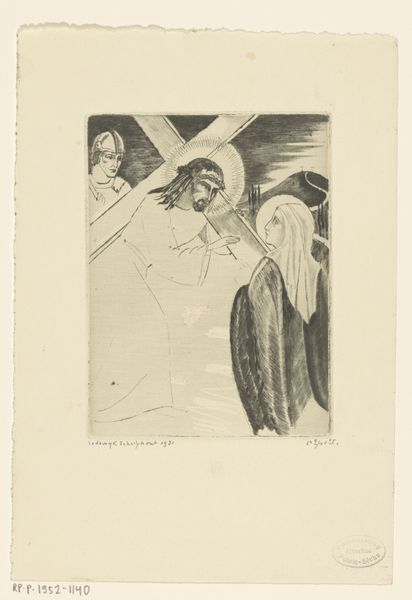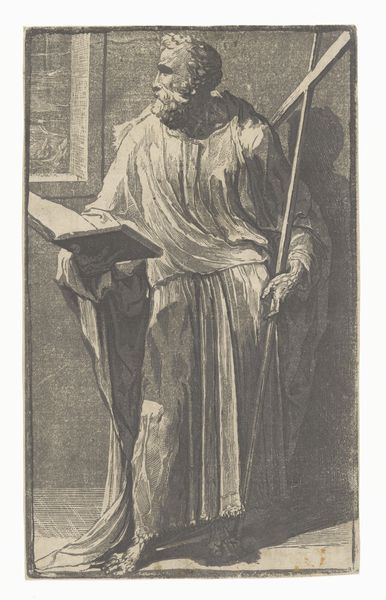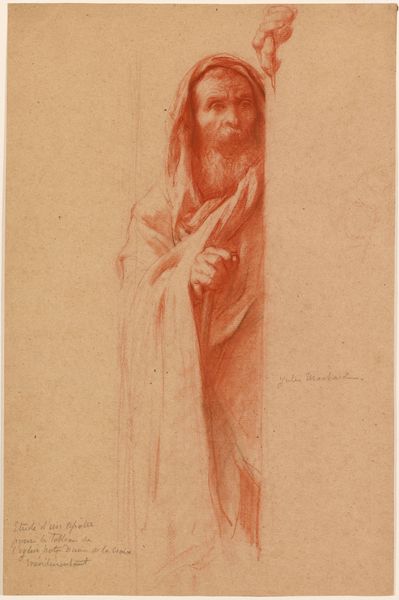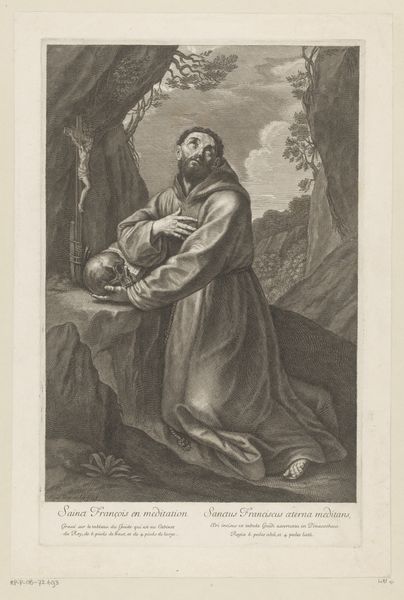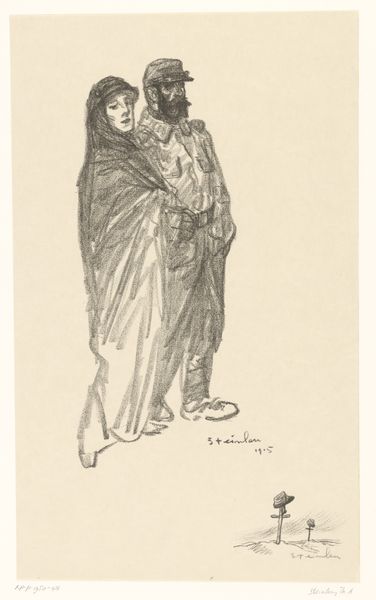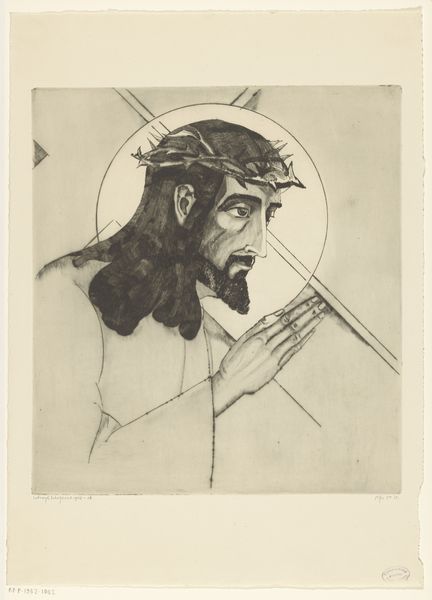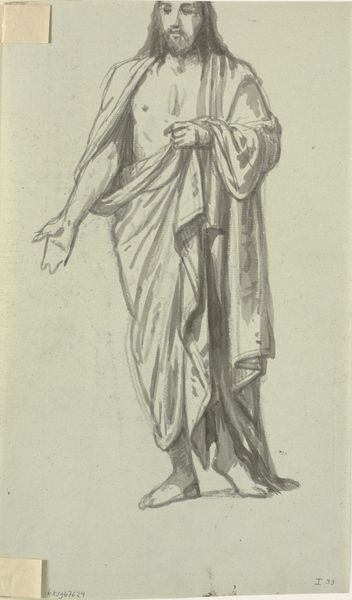
drawing, print, ink, engraving
#
portrait
#
drawing
#
medieval
# print
#
ink
#
engraving
Dimensions: height 199 mm, width 148 mm
Copyright: Rijks Museum: Open Domain
Curator: "Biddende man," or "Praying Man," an engraving by Lodewijk Schelfhout from 1926. It resides here at the Rijksmuseum. What are your first impressions? Editor: Striking, it has such a melancholic and serious tone. I am captivated by the contrasts Schelfhout creates with a fairly limited use of shading. The image, in terms of composition, appears divided, stark contrasts that emphasize isolation and the supplicant's individual plight. Curator: Interesting, that division echoes larger societal fissures that concerned Schelfhout. Remember, the early 20th century saw a great reckoning in traditional values and a rise of social awareness movements. Editor: How so? The work’s structure creates an incredible interplay of light and shadow. The contrast heightens the solemnity of the moment depicted. Note the precise, controlled lines of the engraving. This meticulous execution lends itself to contemplation and solemnity, and further focuses on formal analysis. Curator: Agreed. Schelfhout was deeply invested in the rise of secular ethics questioning established religions in his own lifetime, influenced by the shift away from purely religious societies to societies wrestling with their religious history and values. Editor: That said, don't you find the almost hyper-realistic portrayal, the meticulous rendering of textures – the fabric, the skin – strangely disquieting when framed within the context of an artistic religious vision? It nearly resembles photorealism and the man praying possesses, rather, human emotions of stress, which does a successful job making the sacred more common, more available for understanding by society. Curator: Indeed, through the figure of this kneeling man, rendered with such care, the work underscores that the act of devotion could belong to anyone. That, too, is quite powerful, turning it on its head in many ways. Editor: The manipulation of the technique, then, has not only captured his exterior reality but also hints at the deeper psychological states experienced by modern humans. Curator: For me, the artwork prompts us to ask: Who are we as societies without any guiding principles for what's true or what's false. Editor: For me, it encourages us to observe carefully how different materials shape meaning, which adds another dimension to interpreting such subjects. Curator: A perfect way to end this discussion on this artwork. Editor: A perspective I wouldn't mind adopting in future similar settings.
Comments
No comments
Be the first to comment and join the conversation on the ultimate creative platform.
